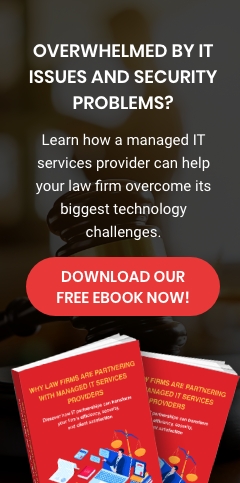Since 1996, USWired has continuously provided reliable IT support for small businesses with little resources to hire their own IT staff. Through our years of experience, we've learned that one of the biggest problems businesses face is working to minimize risks -- without the assistance of a managed IT services provider (MSP).
Make no mistake: Disasters can strike anywhere, anytime. In fact, hurricanes Harvey and Irma made last year one of the deadliest hurricane seasons ever. It goes without saying we have to play the hand we're dealt, and this is where a business continuity plan can turn things around.
What is a business continuity plan?
Simply put, it’s a plan that outlines strategies and instructions that your business must follow to resume operations right away after a disaster.
Recovering quickly after a catastrophe strikes is the key. The continuity plan specifies how your company will respond to a significant event that disrupts operations; make sure data is backed up and recovered; restore mission-critical systems and critical operational activities; as well as secure your staff and property.
Restoring IT is critical for most companies these days, so you'll need to design a business continuity plan that will really work for your business.
Here are important points to consider when you draft your business continuity plan:
#1 The scope of the plan and the person in charge - First, you need to pinpoint all IT setups that are vulnerable and then predict what might happen when disruption takes place. Conducting a business impact analysis comes in handy during this part of the drafting process.
You also need to identify which person will lead the implementation of your business continuity plan. Assigning someone as business continuity head is crucial for the plan to have clarity and consistency in terms of execution.
#2 Loss scenarios and critical functions - You then need to figure out possible loss scenarios after analyzing and assessing risks that will impact your business. You must also determine a recovery time objective, as some critical business functions will not allow any downtime.
One such essential business function is your data management. We’ve already established how to minimize risks after a data breach on our recent post and, if properly executed, the end result should be no different here.
Data is one thing your organization cannot afford to lose, so ensuring your files are backed up and accessible for future use will keep your business operational no matter what type of disaster hits.
#3 Strategies and plan development - Your business continuity head should form a team to come up with strategies, directions, and options for your company. This team should be able to design a framework, formalize techniques, and take down notes.
A checklist is a helpful tool here and should account for equipment, the location of data backups and backup sites, where the plan is available and who should have it.
#4 Testing and maintenance - However good and complete a plan may look on paper, rigorously testing it is the only way to guarantee it will work.
You need to test your business continuity plan often, not just two to four times a year, as most organizations do. Failure to do so will just waste the recovery strategies developed and implemented by your team. Doing so will keep the continuity plan updated and hassle-free.
Even so, most small businesses in San Jose and the San Francisco area still struggle to design and implement a business continuity plan. It’s obviously easier said than done, which is where an MSP, like USWired, can help.
USWired will make sure your business continuity and backup solutions are easy to follow and tailored specifically to your business' IT needs. Call us now to meet with one of our experts who can give insights and help set you up.


